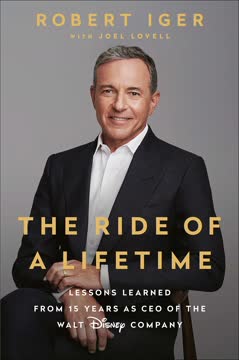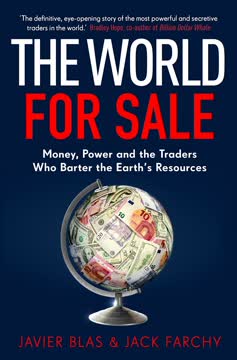Key Takeaways
1. The Linear Economy's Unsustainable "Take-Make-Waste" Model
"We have been scammed into paying unnecessary costs for the past seventy-five years, while the land, air, and water that we collectively own has been despoiled."
Environmental and economic costs. The current linear economy model of "take-make-waste" has led to severe environmental degradation and hidden economic costs. This system, developed in the 20th century, benefits companies by extracting natural resources without accountability for environmental damage. It promotes the production of disposable products, forcing additional resource extraction for each new item manufactured.
Taxpayer burden. The linear model shifts the cost of waste disposal to taxpayers, creating a form of socialism that benefits corporations at the public's expense. This system has resulted in:
- Depletion of natural resources
- Pollution of air, water, and soil
- Accumulation of waste in landfills and oceans
- Hidden costs in taxation and environmental cleanup
Need for change. The unsustainability of this model calls for a fundamental shift in how we produce, consume, and dispose of goods. The circular economy offers a solution to these challenges by reimagining our relationship with resources and waste.
2. Circular Economy: Nature-Inspired Closed-Loop Systems
"In nature there is no waste."
Mimicking natural systems. The circular economy concept draws inspiration from nature's efficient, waste-free processes. It aims to create a closed-loop system where resources are continuously reused, repurposed, and recycled, minimizing waste and environmental impact.
Key principles of the circular economy include:
- Designing products for longevity, repair, and easy disassembly
- Using renewable energy and sustainable materials
- Implementing take-back systems for products at end-of-life
- Developing innovative business models like product-as-a-service
Economic benefits. Transitioning to a circular economy offers significant economic opportunities. According to Accenture, implementing circular processes by 2030 could yield up to $4.5 trillion in economic benefits globally. This paradigm shift not only addresses environmental concerns but also creates new business opportunities and jobs in areas such as recycling, refurbishment, and innovative product design.
3. Recycling's Untapped Potential and Disinformation Campaigns
"There is market demand totaling $120 billion for recycled plastic feedstock, from major brands such as P&G and Unilever, as well as from the soda behemoths too. Yet only 6 percent of that demand is being filled."
Recycling myths debunked. Despite widespread misconceptions, recycling offers significant economic and environmental benefits. In the U.S. alone, the recycling industry:
- Generates $117 billion in economic activity annually
- Provides 540,000 jobs
- Saves communities $3 billion in landfill disposal fees
Disinformation tactics. The recycling industry has faced challenges from disinformation campaigns led by companies with vested interests in maintaining the linear economy. These tactics include:
- Creating fake grassroots organizations ("astroturfing")
- Spreading misleading information about recycling effectiveness
- Lobbying against recycling initiatives and legislation
Investment opportunities. The gap between demand for recycled materials and current supply presents a significant opportunity for investment in recycling infrastructure and technology. Developing more efficient recycling systems and creating markets for recycled materials can help close this gap and realize the full potential of the circular economy.
4. Planned Obsolescence: The Dark Side of Consumerism
"Wear alone made replacement too slow for the needs of American Industry. And so the high-priests of business elected a new god. . . . Obsolescence was made supreme."
Engineered impermanence. Planned obsolescence is a strategy employed by manufacturers to deliberately shorten the lifespan of products, encouraging frequent replacements and driving consumer demand. This practice emerged in the early 20th century and became widespread across various industries.
Examples of planned obsolescence:
- The Phoebus cartel's agreement to limit lightbulb lifespan
- Annual model changes in the automotive industry
- Frequent updates and incompatibility in electronics
Consumer manipulation. Marketing and advertising played a crucial role in promoting a culture of consumption, shifting from needs to artificially created desires. This shift was driven by:
- Psychological manipulation techniques in advertising
- Creation of the "consumer" identity
- Promotion of disposable products as modern and convenient
Environmental impact. The practice of planned obsolescence has contributed significantly to resource depletion, waste accumulation, and environmental degradation. Reversing this trend requires a fundamental shift in both production practices and consumer mindsets towards valuing longevity, repairability, and sustainability.
5. Innovative Solutions for Sustainable Packaging and Waste Reduction
"If a store has low waste numbers, it can be a sign that they aren't fully in stock and that the customer experience is suffering."
Rethinking packaging. Innovative companies are developing sustainable alternatives to traditional packaging materials, addressing the environmental impact of single-use plastics and other wasteful practices. Examples include:
- Biodegradable packaging made from mushroom roots
- Edible food coatings to extend shelf life
- Reusable container systems for consumer goods
Food waste reduction. Tackling food waste is a critical aspect of moving towards a circular economy. Solutions include:
- Advanced date labeling systems using color-changing sensors
- Apps connecting surplus food with those in need
- Anaerobic digesters converting food waste to energy
Retail practices. Challenging long-held assumptions about consumer behavior, some retailers are finding that reducing waste can actually improve the customer experience and profitability. For instance, Stop and Shop discovered that smaller, fresher produce displays were preferred by customers and saved the company $100 million annually.
6. Regenerative Agriculture: Healing Soil and Combating Climate Change
"Where in nature do you find bare soil?"
Beyond sustainability. Regenerative agriculture goes beyond sustainable farming practices to actively improve soil health, increase biodiversity, and sequester carbon. This approach mimics natural ecosystems to create a resilient and productive agricultural system.
Key practices of regenerative agriculture:
- No-till farming to minimize soil disturbance
- Cover cropping to protect and nourish soil
- Crop rotation and diversification
- Integration of livestock for natural fertilization
Climate impact. Regenerative farming practices have shown significant potential for mitigating climate change. Studies have found that these methods can:
- Sequester more carbon in soil than conventional farming
- Reduce the need for chemical fertilizers and pesticides
- Improve water retention and reduce erosion
- Increase crop yields and farm profitability over time
Market demand. Major food companies and retailers are increasingly supporting the transition to regenerative agriculture, recognizing both its environmental benefits and consumer demand for sustainably produced food.
7. Circular Fashion: Revolutionizing the Apparel Industry
"Quality is still associated with newness, not with caring; long-term use as undesirable, not resourceful."
Fast fashion's toll. The current fashion industry model, driven by fast fashion, has significant environmental and social costs:
- 10% of global greenhouse gas emissions
- 20% of industrial water pollution
- 73% of produced clothing ends up in landfills
Circular solutions. Innovative companies are developing circular models for the fashion industry:
- Designing clothes for longevity and recyclability
- Implementing take-back and resale programs
- Developing new, sustainable materials (e.g., algae-based fabrics)
- Creating rental and subscription models
Consumer shift. There's a growing consumer demand for sustainable fashion, particularly among millennials. This shift is driving major brands to adopt more circular practices and transparency in their supply chains.
8. E-Waste: The Growing Challenge and Opportunities
"Every year, an estimated 50 million tons of electronic devices are thrown away globally—the equivalent of all the planes that have ever been made for commercial flight—representing mountain upon mountain of lost value."
Hidden treasure. E-waste contains valuable materials that are often discarded rather than recovered. For example:
- One ton of cell phones can yield 12 ounces of gold
- E-waste recycling can be 13 times cheaper than mining raw materials
Barriers to recycling. Despite the potential value, e-waste recycling faces challenges:
- Lack of infrastructure for efficient collection and processing
- Resistance from manufacturers to right-to-repair legislation
- Rapid technological obsolescence encouraging frequent upgrades
Innovative solutions. Companies and organizations are developing new approaches to tackle e-waste:
- Modular design for easier repair and upgrade (e.g., Fairphone)
- Advanced recycling technologies for material recovery
- Product-as-a-service models for electronics
9. Sustainable Construction: Building a Greener Future
"The manufacture of cement alone accounts for an estimated 8 percent of total annual greenhouse gas belching."
Construction's impact. The construction industry is a major contributor to environmental degradation:
- Responsible for 40% of global CO2 emissions
- Consumes 40% of the world's raw materials
- Generates 30% of total waste in the EU
Innovative materials. Researchers and companies are developing sustainable alternatives to traditional construction materials:
- Carbon-sequestering concrete (e.g., Blue Planet's synthetic limestone)
- Mass timber for tall buildings
- Recycled and upcycled materials for various applications
Circular design principles. The industry is adopting circular economy principles in building design and construction:
- Designing for disassembly and material recovery
- Implementing modular construction techniques
- Creating "material passports" to track building components
10. Business Leaders Driving Circular Economy Transformation
"The divide is between large corporations and their customers. Right to repair is bipartisan."
Corporate pioneers. Forward-thinking business leaders are recognizing the economic and environmental benefits of circular economy principles:
- Unilever's commitment to sustainable brands and practices
- Patagonia's innovative repair and resale programs
- Interface's closed-loop carpet manufacturing
Economic incentives. Companies adopting circular practices are seeing tangible benefits:
- Cost savings from resource efficiency and waste reduction
- Increased customer loyalty and brand value
- New revenue streams from innovative business models
Challenges and opportunities. Transitioning to a circular economy requires overcoming entrenched practices and mindsets:
- Resistance from industries benefiting from the linear model
- Need for new metrics beyond GDP to measure economic success
- Opportunities for entrepreneurs and innovators to create circular solutions
The shift towards a circular economy is gaining momentum, driven by a combination of environmental necessity, economic opportunity, and changing consumer preferences. As more businesses recognize the benefits of circular practices, we can expect to see accelerated adoption of these principles across industries.
Last updated:
Review Summary
The Waste-Free World receives mostly positive reviews, with readers praising its informative content on circular economies and sustainable business practices. Many find the book eye-opening and appreciate the historical context provided. Some criticize it for lacking actionable solutions or being too optimistic about quick changes. Readers value the examples of companies adopting circular models and the insights into waste reduction. However, a few reviewers feel the book is repetitive or lacks depth in addressing political challenges to sustainability.
Similar Books









Download PDF
Download EPUB
.epub digital book format is ideal for reading ebooks on phones, tablets, and e-readers.




